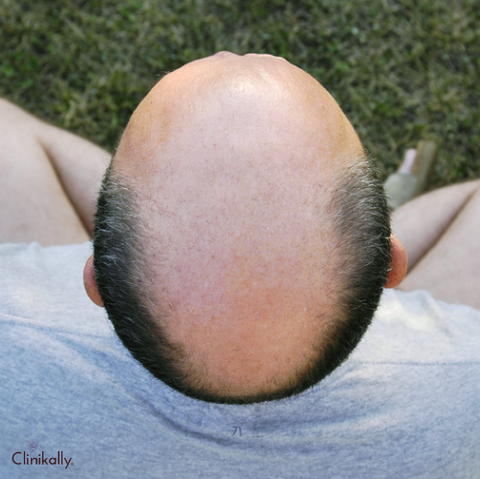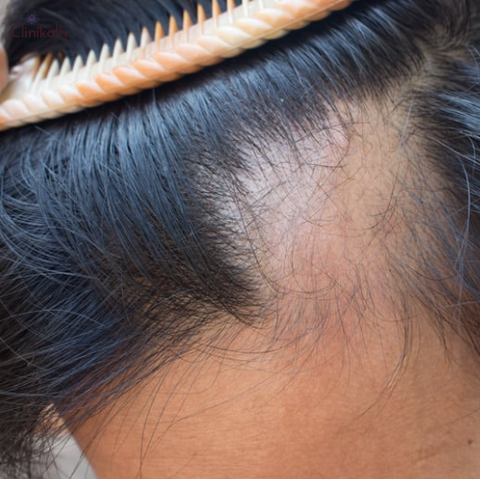Hair loss, whether mild or severe, is a concern that has plagued individuals globally. Many solutions claim to effectively combat this issue, yet one stands out for its proven efficacy and popularity - Minoxidil, commonly known by its brand name, Rogaine. Understanding how this solution works, who it's for, and its potential side effects can help you decide if this is the right hair loss treatment for you.
What is Minoxidil (Rogaine)?

Minoxidil, commercially known as Rogaine, is an over-the-counter medication primarily used for treating androgenetic alopecia, commonly known as male or female pattern baldness. Originally developed in the late 1950s as a treatment for ulcers (although it proved ineffective), Minoxidil surfaced as a potential hair loss solution due to its side effect of hypertrichosis, or excessive hair growth.
Today, it's widely recognized and used in the form of a topical solution or foam, although oral tablets also exist, primarily for treating hypertension.
How does Minoxidil (Rogaine) work?

The exact mechanisms by which Minoxidil promotes hair growth aren't fully understood. However, it's believed to work by prolonging the anagen phase, the active growth phase of hair follicles, and stimulating partially inactive or dormant follicles, leading to thicker and longer hair.
Moreover, Minoxidil may also increase blood flow to the hair follicles, providing them with more nutrients and oxygen, which are essential for healthy hair growth.
How to Use Minoxidil (Rogaine) Effectively?
For optimal results, apply Minoxidil directly to your scalp, specifically in the areas experiencing thinning or hair loss. Ensure your scalp and hair are dry before application to facilitate maximum absorption. Rogaine should be applied twice daily, preferably once in the morning and once in the evening, following the instructions provided with the product. Remember, consistent use is key to seeing results.
What are the benefits of Minoxidil (Rogaine)?
Minoxidil has remained a popular choice among hair loss solutions for its significant benefits:
-
Proven Efficacy: Minoxidil is one of the few hair loss treatments that has been approved by the FDA. Both clinical trials and real-world use have demonstrated its effectiveness in promoting hair growth and slowing hair loss.
-
Versatility: Minoxidil is effective for both men and women experiencing androgenetic alopecia. It's also helpful in certain cases of alopecia areata, an autoimmune condition that causes hair loss in patches.
-
Easy Accessibility: Unlike many treatments that require a prescription, Minoxidil is readily available over the counter. This makes it a convenient option for those seeking a hair loss solution without needing to visit a healthcare professional.
-
Ease of Use: As a topical solution or foam, Minoxidil is easy to apply and can be seamlessly integrated into your daily skincare routine.
Who should or should not use Minoxidil (Rogaine)?
Minoxidil is suitable for both men and women experiencing hair thinning or pattern baldness. However, it is not recommended for individuals below 18 or over 65 years of age, without a doctor's consultation.
It's also not suitable for individuals experiencing hair loss due to childbirth, medication side effects, or nutritional deficiencies. Furthermore, if your hair loss is sudden or patchy, it's essential to consult a healthcare professional before using Minoxidil.
Pregnant or breastfeeding women should not use Minoxidil, and individuals with heart disease should consult their doctor before use due to the drug's origins as a blood pressure medication.
What is the right dosage of Minoxidil (Rogaine) to treat Hair Loss?

Minoxidil is available in different strengths: 2%, 5%, and a potent 10% concentration. Generally, men are recommended to use the 5% concentration, while women were traditionally advised to use the 2% concentration. However, more recent research suggests women can also safely use the 5% concentration for more effective results.
Now, as for the 10% concentration, it can offer significant benefits for those with more severe hair loss or those who haven't responded to lower concentrations. Still, it's crucial to remember that a higher concentration may lead to increased risk of side effects, including scalp irritation or unwanted hair growth in areas other than the scalp. Therefore, it's best to consult a healthcare professional before starting a 10% Minoxidil treatment.
Side Effects of Minoxidil (Rogaine)?
Like any medication, Minoxidil isn't without potential side effects. The most common side effect is scalp irritation, including dryness, scaling, itching, and/or redness. In rare cases, more severe side effects like unwanted facial hair growth, dizziness, fast or irregular heartbeat, fainting, chest pain, swelling of hands/feet, and unusual weight gain can occur. If you experience any severe side effects, discontinue use and consult your doctor immediately.
How long does it take to see results after using Minoxidil (Rogaine)?
The journey to hair regrowth with Minoxidil requires patience. Users generally begin to notice initial results - such as a decrease in hair loss or the appearance of new, fine hairs - after about three to six months of consistent use. However, more noticeable and significant results, such as increased thickness and coverage, may take six to twelve months to become apparent.
It's important to understand that everyone's hair growth cycle is unique, and individual results may vary. Some users may see results faster, while others may take a bit longer. Keep in mind, consistency is key with Minoxidil. Skipping applications or not applying the solution regularly can delay the appearance of results. Also, remember that the new hair growth depends on the continuous use of Minoxidil - if you stop using it, any hair that has regrown may be lost.
In summary, Minoxidil is a marathon, not a sprint. It requires continuous, regular application, and the patience to wait for results to show. But with persistence, the results can be a significant improvement in hair coverage and self-confidence.
Bottom Line
Minoxidil (Rogaine) has stood the test of time as an effective, non-prescription solution for hair loss. It offers benefits like easy accessibility, ease of use, and proven effectiveness. However, patience and consistency are key to achieving desired results, and it's important to be aware of potential side effects.
Before starting any new treatment, including Minoxidil, it's always recommended to consult a healthcare professional to discuss the benefits, risks, and whether it's the right fit for your specific situation. Remember, hair loss is a common issue, and various treatments are available – you have options, and you're not alone.
With the right approach and treatment, you can confidently take the first step towards reclaiming the health of your hair and regaining your self-esteem.









































